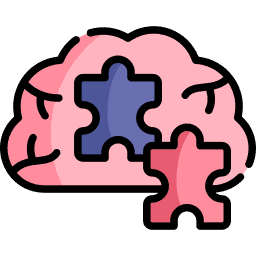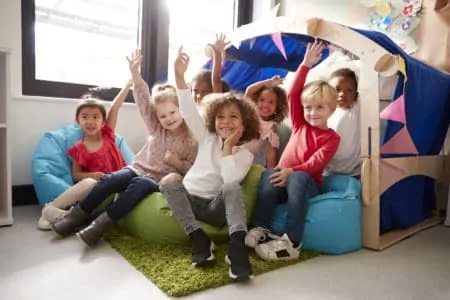Do you want your child to speak with non-English speaking relatives? Perhaps you want them better equipped for travel, school requirements, or the future job market.
Regardless of your motivation, speaking two languages benefits children greatly. Raising a bilingual child takes work, but the rewards are worth it. Here is what to expect and how to get started.

The Growing Trend of Multilingualism

U.S. residents prioritize multilingualism now more than ever. For some, it is a necessity. Parents or grandparents may speak little English, so a child learns a second language to converse with family.
However, much of the language diversity in the U.S. comes from choice rather than necessity.
Making Progress
We still trail behind other countries where bilingualism is standard. In Switzerland, for example, approximately 42 percent of residents speak two or more languages daily.
Bilingualism in the U.S. is increasing for a few reasons. Immigration plays a large role, as families bring their native tongues with them. Additionally, many parents now actively choose to teach their children a second language simply because they recognize the developmental advantages.
Benefits of Being Bilingual

Raising a bilingual child requires time and consistency. Naturally, you want to know the effort pays off.
Bilingualism offers significant future advantages for your baby. Here are the primary benefits:
- Cultural appreciation: Learning a language opens a new world. Children learn about different people and customs, which fosters empathy and cultural intelligence.
- Global perspective: It is easy for kids to feel like their town is the entire world. A foreign language forces them to think of themselves as global citizens.
- Mental strength: Children experience a brain function boost regardless of when they start (2). Research suggests speaking a second language improves concentration and intelligence.
- Career opportunities: Being bilingual makes your child a competitive candidate in the job market. It opens doors to international business and communication roles.
- Travel comfort: You never know what travel opportunities will arise. Knowing a second language makes studying abroad or traveling much less intimidating.
- Brain health: Some studies show additional languages improve memory in both adults and children. There is also a correlation between bilingualism and delayed dementia, though research is ongoing.
How To Decide Upon a Language

For some families, the choice is obvious. If relatives speak a native language, that is the natural pick. It strengthens family bonds and connects the child to their heritage.
If you are pursuing bilingualism solely for developmental benefits, the choice might be harder. Here is how to decide which language to teach your child:
- Examine your reasons: If you want to give your child a career advantage, pick a widely spoken language. Mandarin Chinese, Spanish, French, or German are excellent choices.
- Assess your own skills: If you already know a foreign language, teach that one. You can pass on your knowledge while brushing up on your own skills.
- Check local resources: If a neighbor, relative, or friend speaks a foreign language, consider that one. Access to native speakers is invaluable. In rural areas, you may need to rely on available teachers or online programs.
- Ask your child: Older children may have a strong preference. If they are interested in a specific culture or language, let them choose. Internal motivation fuels learning.
How to Raise a Bilingual Child

Once you choose a language, it is time to start. Here are six tips to ensure your child’s success.
1. Start Young
While people of any age can learn languages, young children adapt easiest. The optimal time to introduce a second language is between birth and age 6 (3).
Children pick up languages rapidly because their brains are primed for language acquisition. This “critical period” slows down around age 11. While older kids can certainly learn, it requires more conscious effort.
It’s All About Attitude
Teenagers often feel embarrassed about mispronouncing words in front of peers. A toddler or preschooler simply speaks without fear of judgment. This lack of inhibition speeds up the learning process.
2. Plan Ahead
Bilingualism rarely happens by accident. You need a strategy. Determine who will speak the language and when.
Gather your materials. Look for books, music, and shows in the target language. Create a schedule that ensures daily exposure. Consistency is the key to retention.
3. Create Exposure
Without regular exposure, a child will only memorize vocabulary lists. To achieve fluency, they need to hear the language used in context.
Create an environment where they are encouraged to speak. This could mean a specific “language corner” in your home, hiring a bilingual nanny, or setting up playdates with other bilingual children.
4. Find Opportunity
Real-world application excites children. Conversations with a teacher are good, but organic encounters are better.
If your child studies Spanish, take them to a Mexican restaurant and encourage them to order in Spanish. If they are learning French, finding a local cultural festival can be inspiring. You do not need to book an expensive trip abroad to find these moments; look for local communities.
5. Make It Fun
If learning feels like a chore, your child will resist. Avoid turning language time into a drill session.
Gamify the experience. Use puppets that “only understand” the target language. Sing songs, have dance parties to foreign music, or play board games in the second language. When kids are having fun, they learn without realizing it.
6. Take It To The Next Level
Parental effort goes a long way, but you might hit a ceiling. If your goal is total fluency, seek outside help. Look for immersion schools, weekend language programs, or private tutors to refine grammar and complex vocabulary.
Bilingualism Strategies

There are several established methods for raising bilingual children. Choose the one that fits your family dynamic best.
One Parent, One Language (OPOL)
In this method, one parent speaks only the minority language to the child, while the other parent speaks the majority language (usually English).
Pros
- Clarity: The child associates a specific language with a specific person, reducing confusion.
- Exposure: The child gets consistent daily practice with the second language.
Cons
- Isolation: It can feel isolating if one parent does not understand what the other is saying to the child.
- Balance: If the “minority language” parent works long hours, the child may not get enough exposure.
Minority Language at Home (ML@H)
Here, the entire family speaks the second language inside the home, while English is reserved for the outside world (school, stores, playground).
Pros
- Inclusion: Everyone participates, creating a strong family bond around the language.
- Immersion: This creates the highest level of exposure to the minority language.
Cons
- Discipline: It requires strict adherence. It is easy to slip back into English when tired or busy.
Time and Place Method
You designate specific times or locations for the second language. For example, you might speak Spanish on Tuesdays and Thursdays, or only during bath time and dinner.
Pros
- Flexibility: You set the schedule to fit your lifestyle.
- Predictability: The child knows exactly when to switch modes.
Cons
- Consistency: It is difficult to maintain a rigid schedule as children get older and have extracurriculars.
Myths About Bilingualism

You may have heard concerning rumors about teaching children a second language. Let’s debunk common myths.
Bilingual Children FAQs
Give It The Old College Try

Learning a second language is a powerful skill at any age. It broadens your world, improves cognitive health, and provides an edge in the job market.
While it is easiest to teach your child while they are young, consistency is more important than starting age. Make it fun, keep it relevant, and enjoy the journey of learning together.









